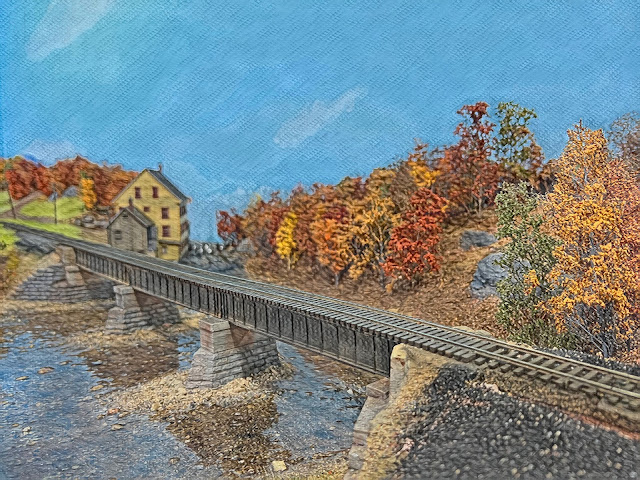As a rule I prefer to give "how-to" clinics - I figure at least the audience members can look past my clunky presentation and at least pick up a tip or two! But when I asked to present the keynote for the Railway Modellers Meet in British Columbia I decided to step outside my comfort zone and offer not a "how to" but a "why to do" clinic. Unfortunately I missed the chance to give this presentation in person, but I did an online virtual talk last night.*
In general the clinic went well. Nobody threw virtual tomatoes at me, and I didn't have any of the "CLINIC HELPERS" that I've written about before!
I'd give the clinic a solid C+. If we're grading on a curve I'd bump that up to a B-. Not bad considering some people (who I've never spoken to by the way) have written over the years to say I don't seem all that bright.
What's with this "Macro" Modeling?
The idea behind "Macro" prototype modeling is while we as model railroaders have gotten really, really, good at locomotives, rolling stock, some structures. But even if the individual models are superbly and accurately detailed sometimes our layouts fail to look much like the real world.
The talk somehow got split into two, not necessarily cohesive sections. The latter half focuses on three ways to make a layout look bigger - Selective Compression, Forced Perspective, and something I called "Controlling Viewing Angles." With some clarification and some more specific how-to examples I think these would form the basis for a talk titled "Expanding Your Layout Horizons" or some such.
That leaves the first half of last night's clinic. It seemed to me that it got a little muddy - I talked about the importance of identifying signature elements - those items that are "must haves" that firmly set the scene in a place and time - and I also mentioned how knowing what story you want to tell is an important aspect of model railroad design that's sometimes overlooked. In other words, a bunch of the pieces were there - but I don't think I clearly made the point.
Here's one slide from the clinic - I included it because I wanted to emphasize the "know what story you're trying to tell". Modern theme parks, such as Disney, MGM etc... spend buckets of money to create "immersive" experiences. Perhaps that idea should have been the basis on the first half of my clinic? A clinic that focuses on model railroads as "Immersive Story Telling" experiences?
Are model railroads Art?
I didn't attempt to answer this question in my clinic and I won't be so bold as to elaborate on it here. A short answer is "I Think Model Railroads Can be Art." Detailed model building is really considered more of a craft - not "fine art".
I'm sure someone is already posting comments on how "such and such ... is a model railroad artist." Most of the time when we try to answer this question we focus on model railroads as visual art - after all really good artist/model railroaders use fine art techniques - they've mastered color, texture, and sculpting, augmenting that with mastery of the craft of model building - all that mechanical stuff like tight joints, no visible glue marks or out of scale elements.
But what if we expand our thinking beyond visual arts to include other art forms, such as story telling? Consider this - when someone asks you to describe your layout do you engage your left brain and rattle off a bunch of specs and minutia? Or do you relay the story your layout is trying to tell?
Close, But no Cigar
One of the keys of "Immersive Story Telling" is to immerse the viewer in the builder's vision. Upon reflection, I should have tied this back into the "Controlling Viewing Angles" portion of the clinic. I sort of did with this slide - which shows how the "alcove" area on my layout can be divided up into "interest zones" in order to make the layout seem larger.
I could have taken this a step further and shown how this relates to the design of a theme park - with visual view blocks between each of the key "vignettes," an approach not only intended to make the layout seem larger, but that also contribute to immersive story telling.
Who knows, maybe I'll pursue this further. But I'm probably not qualified to ... you know, I'm not all that bright.
*The Railway Modellers Virtual event continues on the next three Thursday evenings - starting at 7pm (Pacific time). You can find clinic descriptions etc., HERE.










